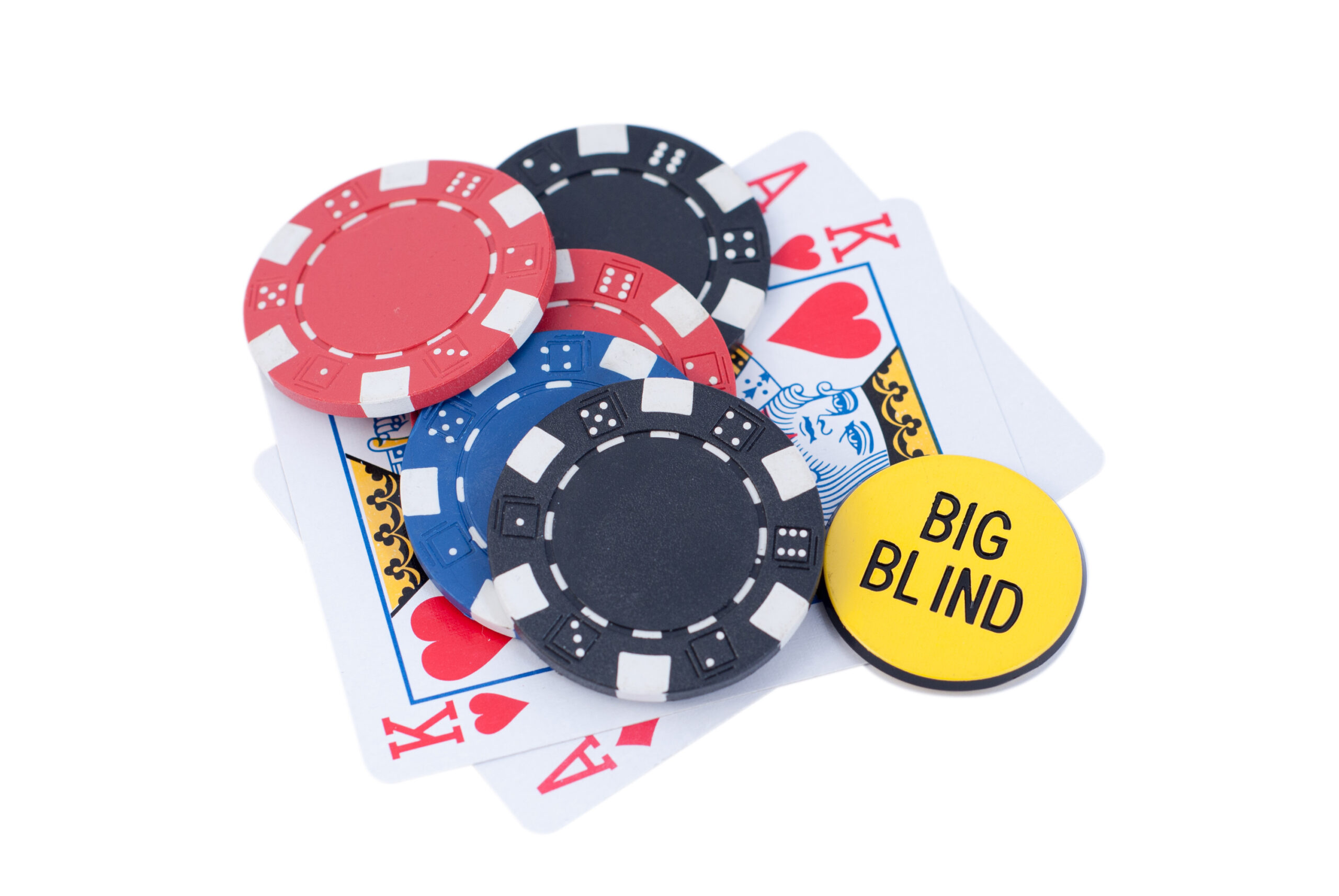The Difference between a Bluff and a Semi-Bluff
Bluff hands are when you miss the flop completely.
Semi-bluff hands are hands where you have outs.
In the hand examples in this article, the situation is a 3-bet pot, where hero is in the big blind (BB) and villain is on the button. The button attempted to steal. The small blind (SB) folded and hero 3-bet. Villain called. So, the pre-flop betting went as follows.
Pre-flop
Villain (Button): Raises 3BB
Hero (BB): Raises 10BB
Villain (Button): Calls 7BB
With semi-bluff hands, hero can usually continue betting on the flop even when villain doesn’t fold quite enough to make a c-bet profitable.
The fact that hero has some fold equity combined with outs will usually mean that he has enough total equity to continue betting on the flop.
Visible Outs versus Less Visible Outs
It is important to differentiate between semi-bluff hands that have good implied odds and semi-bluff hands that don’t.
In terms of outs, low pocket pairs are at the low end of semi-bluff hands, with only 2 outs to make a set.
One Overcard = 3 outs
One overcard has 3 outs to hit top pair. However, I would count a low pocket pair as a better semi-bluff hand than the single overcard.
There are 2 reasons for this.
Firstly, you will have more certainty of winning the hand if you hit a set, compared to hitting top pair.
Secondly, you will get more implied odds when you hit your set.

In the above hand, the post-flop betting went:
Flop
Hero (BB): Bets 10.25BB
Villain (Button): Calls 10.25BB
Turn
Hero (BB): ?
If hero has the best hand, he is going to have difficulty getting much money from his opponent. The problem is that villain can see the ace. If villain had a Kx hand, he might call a bet. However, if he had a pair below a king, he will fold to a bet on the turn.
If hero bets on the turn and villain calls, hero will not be confident as to whether he is ahead or behind in the hand.
Villain would probably call one bet with a Kx hand. However, if he has 2 pair or better, he might decide to slowplay.
Often players, steal with Ax hands. If hero had a pair on the flop with something like A8 or A2, he will have hit 2 pair on the turn. Basically, when you semi-bluff with overcards and you hit one of your outs, you end up in a way ahead way behind situation.
Drawing to a Set = 2 Outs

In the above hand, hero has a pair of 3s in the BB and he 3-bet a button stealer.
The pre-flop betting and the betting on the flop went the same as in the previous example.
Hero hits his set on the turn. Now, hero can feel fairly confident that he is ahead in the hand.
In addition, the 3 of diamonds on the turn will not scare villain.
Let’s say hero checks on the turn.
If villain has something like AK or 2 pair, he might bet big on the turn to protect his hand from draws.
If villain doesn’t bet his top pair on the turn and pot controls, hero can bet big on the river and villain is likely to call. A big river bet by hero will look like he is bluffing just because the turn checked through. Therefore, villain is likely to call a big bet on the river.
The main point is that it is better if your semi-bluff has outs that won’t scare your opponent. In this way, you get implied odds when you hit one of your outs.
Visibility Makes a Difference
Let’s look at the 6 outer.

Although 2 overcards has 6 outs, it is a highly visible when you hit your outs. Of course, you can c-bet or donk bet on the flop if your opponent folds enough. However, when you hit your pair with an ace or a king on the turn or river, this will worry your opponent if he has a lower pair. Therefore, you will not get good implied odds.
You also have the problem that you could hit one pair, while villain hits 2 pair.
The Bottom Line
The bottom line is this. If you are up against a pre-flop steal, your calling range should be weighted towards premium hands, while your 3-bet range should be a mix of premium hands, suited connectors and pocket pairs.
I know this is an unbalanced range. However, we are talking multi-tasking, multi-tabling, microstakes opponents here. I doubt anyone is paying enough attention to one table to notice your range.
If you have high cards, such as AK or AQ, you can sometimes just call pre-flop against a steal. High cards play well in a single-raised pot. If both, you and your opponent, hit a king or an ace on the flop, you will have the better kicker.
If you 3-bet pre-flop with AK, your opponent may fold his Ax and Kx hands that have weak kickers. You don’t really want your opponent to fold when you have a premium hand. By contrast, you don’t mind your opponent folding to a 3-bet, when you are holding a suited connector or a pocket pair.
